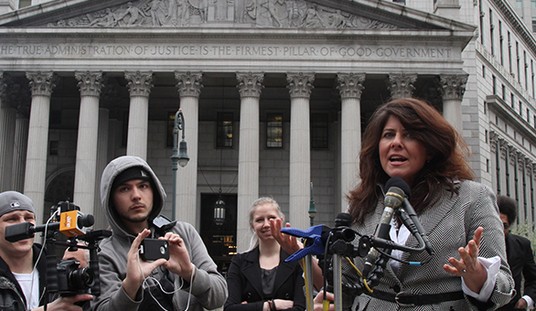Amidst Obama’s inexorable war on American energy, consumers, jobs, and prosperity, his EPA is in the process of promulgating 4 new pollution rules that will bury the coal industry and “necessarily” raise the price of electricity on American households. They are the Cross-State Air Pollution Rule, the Mercury and Air Toxics Standards for Utilities (MACT), the Cooling Water Intake Structures regulation, and the Disposal of Coal Combustion residuals. The former two have already been finalized while the latter two are close behind. Today, the D.C. Circuit Court struck downthe EPA’s authority to implement the Cross-State Air Pollution Rule.
In August 2011, Obama’s EPA imposed a cap and trade style program to expand existing limitations on sulfur dioxide and nitrogen oxide emissions from coal-fired power plants in 28 “upwind” states. They claimed that they had unlimited authority pursuant to the Clean Air Act to cap emissions that supposedly travel across state lines. The EPA admitted that the rule would cost $2.7 billion from the private sector and force many cola-fired power plants to shut down. Priorities USA might have even run an ad against Obama claiming that his superfluous regulations cause workers to lose their health insurance and die.
Luckily, several southern states decided to sue the EPA in federal court. In EME HOMER CITY GENERATION, L.P. v. EPA, the D.C. Circuit Court of Appeals ruled 2-1 that the EPA had exceeded its authority under the Clean Air Act in two respects:
First, the statutory text grants EPA authority to require upwind States to reduce only their own significant contributions to a downwind State’s nonattainment. But under the Transport Rule, upwind States may be required to reduce emissions by more than their own significant contributions to a downwind State’s nonattainment. EPA has used the good neighbor provision to impose massive emissions reduction requirements on upwind States without regard to the limits imposed by the statutory text. Whatever its merits as a policy matter, EPA’s Transport Rule violates the statute. Second, the Clean Air Act affords States the initial opportunity to implement reductions required by EPA under the good neighbor provision. But here, when EPA quantified States’ good neighbor obligations, it did not allow the States the initial opportunity to implement the required reductions with respect to sources within their borders. Instead, EPA quantified States’ good neighbor obligations and simultaneously set forth EPA-designed Federal Implementation Plans, or FIPs, to implement those obligations at the State level. By doing so, EPA departed from its consistent prior approach to implementing the good neighbor provision and violated the Act.
Judge Brett Kavanaugh, who wrote the majority opinion, created more jobs with that decision that Obama did throughout his tenure.
While this is definitely a big victory, and underscores the importance of putting conservatives on the DC Circuit Court (which has original jurisdiction over many federal policy issues), we still need to continue a robust legislative assault against these cap and trade style regulations. The Clean Air Act and Clean Water Act still serve as an albatross around the necks of job creators and can still be used to justify many of the impending regulations, even after the court’s decision.
When Republicans take back control of government, they must move to roll back most federal involvement in regulation of pollution. With the states more than happy to pick up the slack, especially the blue states, federal involvement in this regulatory scheme can only be harmful. Rules and regulations that could potentially affect the lifeline of local economies must only be debated and implemented on a local level.
Cross-posted from The Madison Project













Join the conversation as a VIP Member